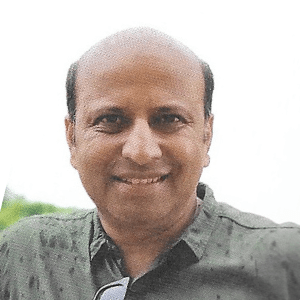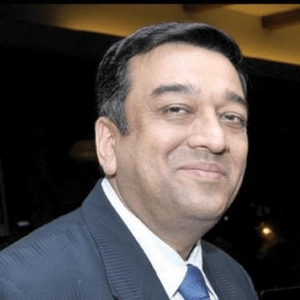In the last 40 years the definition of talent management has progressed with its time. In the 1980’s talent management meant developing internal talent. As the world faced an economic downturn, the definition changed.
Organisations restructured and began focusing on recruiting external talent. Organisations in the ‘90s realised they were losing too many valued and experienced employees because of this and changed tracks again to focus on retention and nurturing the existing employees.
As HR integrated into the talent management function, the 21st century looked to be a promising chapter in the future of talent management. Technology developed at exponential rates, tech companies started to see a market in talent management tech and the first consolidated talent management system was born.
Talent management systems (TMS), better known as ‘hire to retire’ systems or employee lifecycle management platforms, were 2023, famed HR expert, Josh
Bersin talks about three separate the first to provide organisations with a complete solution from recruitment all the way to retirement. Most of the TMSs we see today deal with the organisational requirements to manage talent. From onboarding to planning and functions like compensation management, TMSs help organisations create a backbone to an employee’s career.
In the age of employee empowerment and the Gen Z workforce, organisations have begun to render more importance to their employees, treating them as valued members of the organisation, making them feel heard and giving them the right opportunities to excel and stay happy. Organisations are having to invest in keeping their workforce engaged.
Independent TM softwares have provided organisations with an avenue to fill that gap and use them outside of their existing TMSs but that doesn’t look to be the long term solution to the employee engagement challenges posed in the modern day workforce.
As HR and its responsibilities evolve so should its tech. In his start of the year predictions for TM tech platforms that could spur the change the industry has been yearning for.
Understanding what they are and how they can be used with a revamped system is essential to an organisation’s ability to implement them well.
Employee-experience programmes: These are initiatives or activities designed to improve the overall experience of employees within an organisation. These programmes can take many forms, and they may be focused on a variety of different areas, such as work-life balance, career development, health and wellness and more. The goal of employee experience programmes is to create a positive and engaging work environment for employees, and to support their overall well being and satisfaction.
Talent-intelligence platforms: These are tools or systems that provide organisations with insights and data on their workforce and talent landscape. Their goal is to help organisations make data driven decisions related to talent management.
“In the past 30 years, the way the software industry along with the HR industry has seen a boom, it is not surprising if we see an integrated talent-management system in the coming years. From an employee’s perspective, an integrated system will iron out many of the minor inconveniences faced in managing talent”
Ranjith Menon, senior vice president – corporate human resources, Hinduja Global Solutions
These platforms typically integrate data from various sources, such as employee-performance data, employee-demographic data, compensation data and more. They can also include features such as data visualisation and analytics to help organisations understand their data and make sense of it.
Talent-marketplace solutions: Also referred to as career-pathway solutions, these are tools or systems that help organisations manage and develop their talent effectively.
Creating an ecosystem: Unlike the ‘hire to retire’ systems that integrated with competency modules to create a holistic module, these if need be, creating a talent management ecosystem of sorts.
Ranjith Menon, senior vice president – corporate human resources, Hinduja Global Solutions, sees the integration of these three platforms as an inevitability. “In the past 30 years, the way the software industry along with the HR industry has seen a boom, it is not surprising if we see an integrated talent-management system in the coming years. From an employee’s perspective, an integrated system will iron out many of the minor inconveniences faced in managing talent,” feels Menon.
These solutions can provide employees with visibility into career opportunities within the organisation, while also providing organisations with insights into the skills, knowledge and experience of their employees.
Individually these programmes provide the organisation and employees with the right tools to better understand each other’s requirements and act on them. Together, they can shape the future of how we perceive a holistic talent – management system is implemented in organisations. Begging the question, could they form an ecosystem? programmes provide organisations with the flexibility to infer and import new skills, content and assessments. Systems of the past could not do this due to their rigid nature.
“We are in the age of personalised experiences. Everything from banking, advertising, to retail, everybody is looking to create a hyper personalised experience for their audience, why not HR?”
Srikanth Karra, CHRO, Mphasis
The flexibility provided by the new-age systems allows for a truly modular suite of talent-management systems that can work well together if need be, creating a talent management ecosystem of sorts. Ranjith Menon, senior vice president – corporate human resources, Hinduja Global Solutions, sees the integration of these three platforms as an inevitability.
A system such as this that hopes to understand the employee journey from the grassroots level will help organisations properly map and personalise an employee’s career in the organisation. An ecosystem only makes it easier to avail the necessary data needed for an organisation’s HR function to create more well informed decisions on the career progression of an employee.
“We are in the age of personalised experiences. Everything from banking, advertising, to retail, everybody is looking to create a hyper personalised experience for their audience, why not HR?,” says Srikanth Karra, CHRO, Mphasis.
Does HR require a talent-management ecosystem? Technology in every application is being driven towards one common goal — better integration. If we take our daily use hardware as an example, phones, laptops and even watches are being integrated with one another, with overlapping features that help improve the flow of certain activities, allowing for a more immersive experience.
Employee-experience programmes, talent-intelligence programmes and talent marketplaces are systems built to adapt to the constantly-changing requirements of HR today. Having an integrated system that takes advantage of the modularity of these programmes as well as creates a platform to allow them to work together seamlessly can prove to be beneficial for HR departments everywhere.
“With the number of opportunities and general awareness going up considerably amongst talent, traditional ways of managing the talent falls significantly short of expectations”
Shashikant KS, CEO and CHRO, Chai Point
Shashikant KS, CEO and CHRO, Chai Point, expands upon the same, saying, “With the number of opportunities and general awareness going up considerably amongst talent, traditional ways of managing the talent falls significantly short of expectations.”
He rightly points out, “Employee growth and experience expectations are far more dynamic than ever before. At the same time, the business challenges and requirements are also changing quite rapidly. A platform that can solve these will definitely help organisations.”
Revolutionising the current system Creating a platform such as this outside of the pre-existing ‘hire to retire’ system or as Karra prefers to call it, an ‘employee lifecycle’, is a possibility. With technology advancing at the rate it is and integration becoming a key focus in the industry, a system such as this could very well see the light of day in the near future.Rather than creating a consolidated TM tech environment outside of the employee lifecycle systems utilised by numerous large corporations, finding a way to integrate it with the pre-existing programme can prove to be better.
The employee lifecycle systems most organisations make use of take care of most of the basic TM functions required by an organisation. Data is being collected from recruitment all the way to the last day of the employee. Leveraging this foundation of data to build a more complete system seems ideal.
Rather than looking at employee experience programmes, talent intelligence platforms and talent marketplace solutions at face value, taking the data recorded from them and finding data points that can help an organisation chart an employee’s career and intervene in the right places is the way to use this platform.
“The job of a system like this is to aid and guide the HR function in an organisation to better understand the points of tension in an employee’s career. Such a system provides an HR professional with the proper inputs to intervene and help the employees during their journey in the organisation,” says Karra.
He goes on to cite an example, “If employees are unhappy with the current compensation, the system provides the employee with an indirect mode of expressing their unhappiness as well as alerting the HR department about it, so that This speeds up talent rotation in organisations, keeping the employees happy and engaged. It also provides employees with an action that can be taken accordingly.”
As more employee data is collected pertaining to their work experience, the scope for HR departments to better understand career progression opportunities, employee happiness and engagement widens, among numerous other functions that would otherwise take ages for basic human intervention to understand.
What are the benefits?
A system that automates the labour-intensive functions of talent management can prove to be extremely beneficial on a large scale. Organisations with large workforces will be able to automate numerous talent-management functions that would otherwise usually take a lot of time to execute.
On an individual level, employees will be able to express their concerns and get responses to basic requests instantly. Talent marketplaces will allow employees to list themselves on a platform in case they are looking for a career rotation or progression opportunity as well as notify managers looking for workers in similar roles.
The new generation of employees prefer modes of communication that do not require direct confrontation. Therefore, a platform such as this looks to be the solution to a lot of the ambiguity organisations face in understanding them.
As an organisation, HR professionals will be able to better understand their employees, gauge where the major concerns are, and keep track of employee happiness through their responses. They will be able to create better-informed decisions on an employee’s career at the organisation and map their progression to best suit their needs in alignment with the organisation’s vision.
Expanding on the same, Karra says, “A system such as this gives HR professionals the right inputs to create a more well-informed, intelligent intervention strategy. As new data points emerge from the programme, an HR head will be able to better understand the situation the employee is in and act accordingly.”
“From an organisation’s perspective, an ecosystem will help promote innovation and create a learning culture. It will offer a security net for people to experiment and fail. This will allow them to tap into their innovative talents and eventually help the organisation to grow,” enunciates Menon.
Even if organisations do not wish to implement an integrated ecosystem, they will be able to leverage the quality of life perks that these platforms provide, which can prove to be essential in creating a better understanding between the employees and their managers and HR departments.
Will it make an organisation overdependent on tech?
One of the main criticisms of HR tech is the possibility of an organisation becoming too tech-dependent. Integrated ecosystems will only get smarter as they evolve, and learn more about the organisation they are implemented in.
To achieve complete automation, artificial intelligence (AI) and machine learning (ML) programmes will have to weave themselves into these systems. Fortunately for the critics, the integration of AI and ML into HR systems has not reached a level where it can fully automate the talent-management function. One of the key advantages of the platform is its ability to provide better insights to the HR function to map the employee lifecycle and make better decisions according to them. In the future, if we integrate AI and ML into these systems, they will still lack the ability to think like a human HR professional.
“Technology acts more as an enabler rather than something that can pull us down. It acts as a support system to existing systems. It is a world of ‘and’ not ‘or’”
Atul Mathur, executive vice president, Aditya Birla Capital
As we look at the AI generative tools of today, people have recognised that the platform does not have the ability to think outside its parameters. In the case of HR, an AI platform will be briefed on the situations and how to deal with them but only has the ability to react to them in black and white — ‘yes’ or ‘no’.
“The inability to think independently, or make decisions outside of its programming will give employees the opportunity to try to ‘game’ these platforms,” points out Karra.
For instance, AI chatbots on numerous delivery applications have been taken advantage of. There have been several cases of customers getting refunds or free deliveries because of the AI’s inability to distinguish genuine cases from the fake ones.
Letting AI or ML take the reins to initiate important HR functions without human intervention will not work even in the short term. Organisations that try to integrate an AI-based ecosystem will have to be wary of the functions the AI/ML platform will take on.
The ecosystem will act as an aid to human HR professionals to make better decisions on talent management. Having an automated system will kill the essence of the platform.
In the end, as Atul Mathur, executive vice president, Aditya Birla Capital says, “Technology acts more as an enabler rather than something that can pull us down. It acts as a support system to existing systems. It is a world of ‘and’ not ‘or’.”
Using technology as a support system for actual human intelligence is the only way to reap the rewards of a consolidated talent-management ecosystem.







